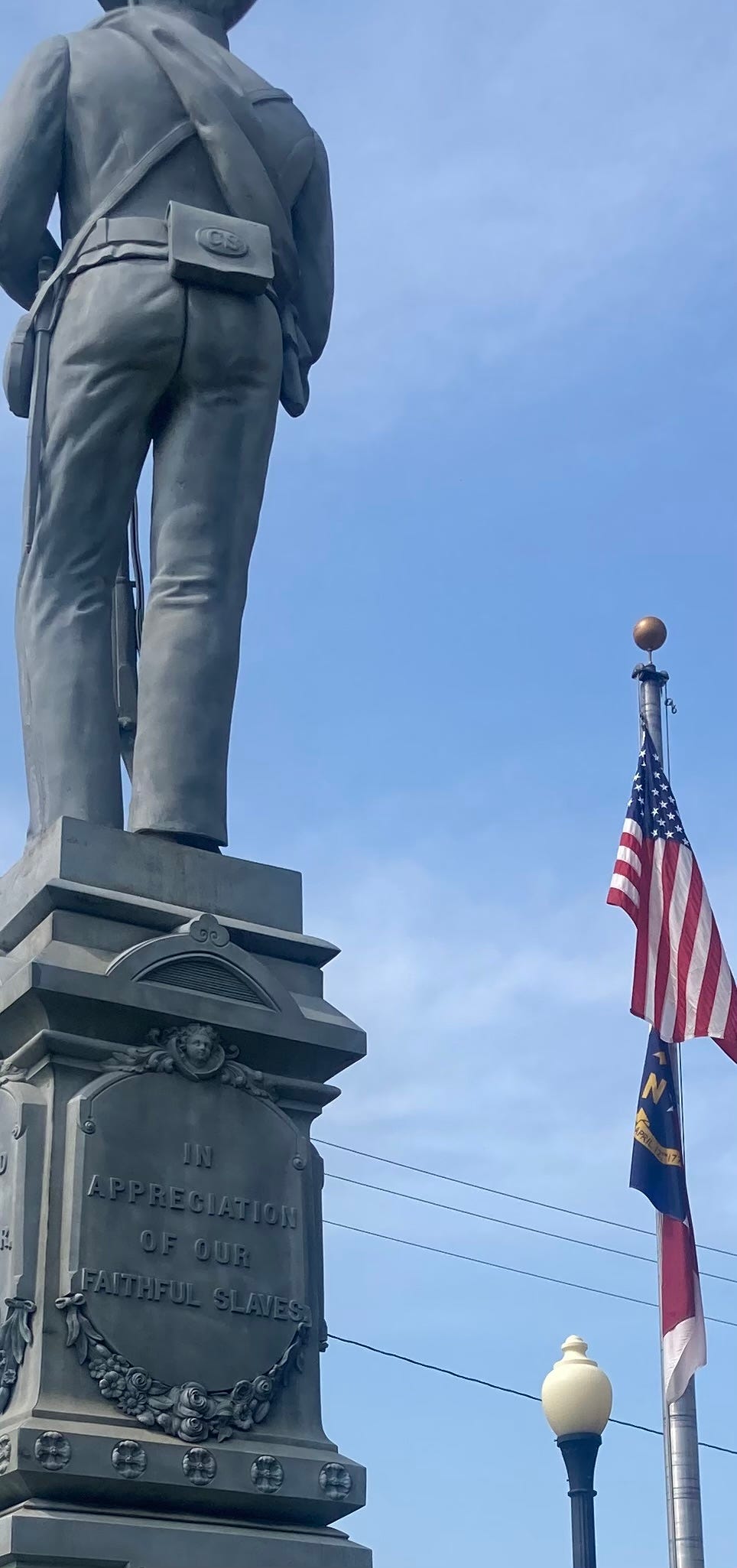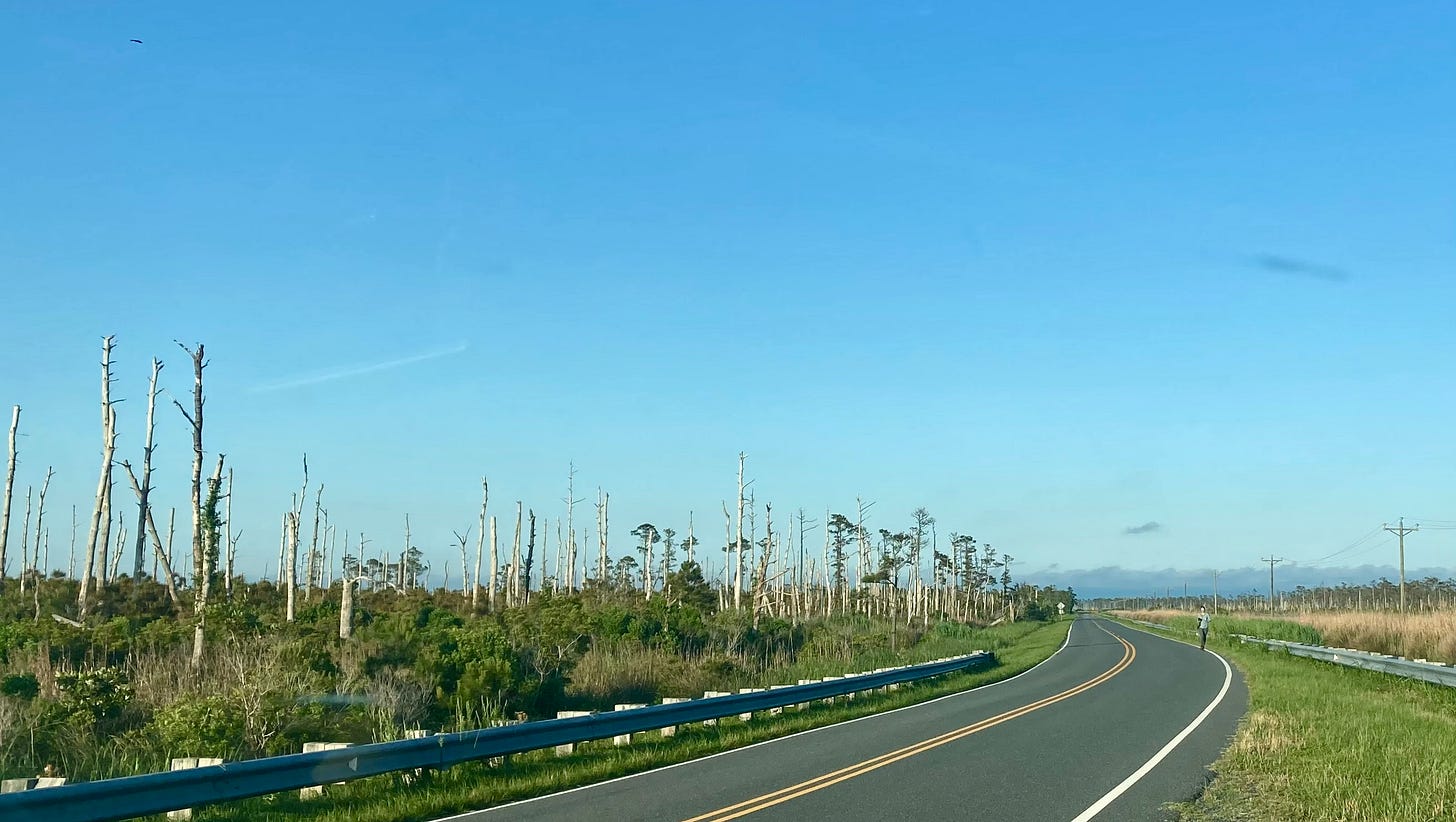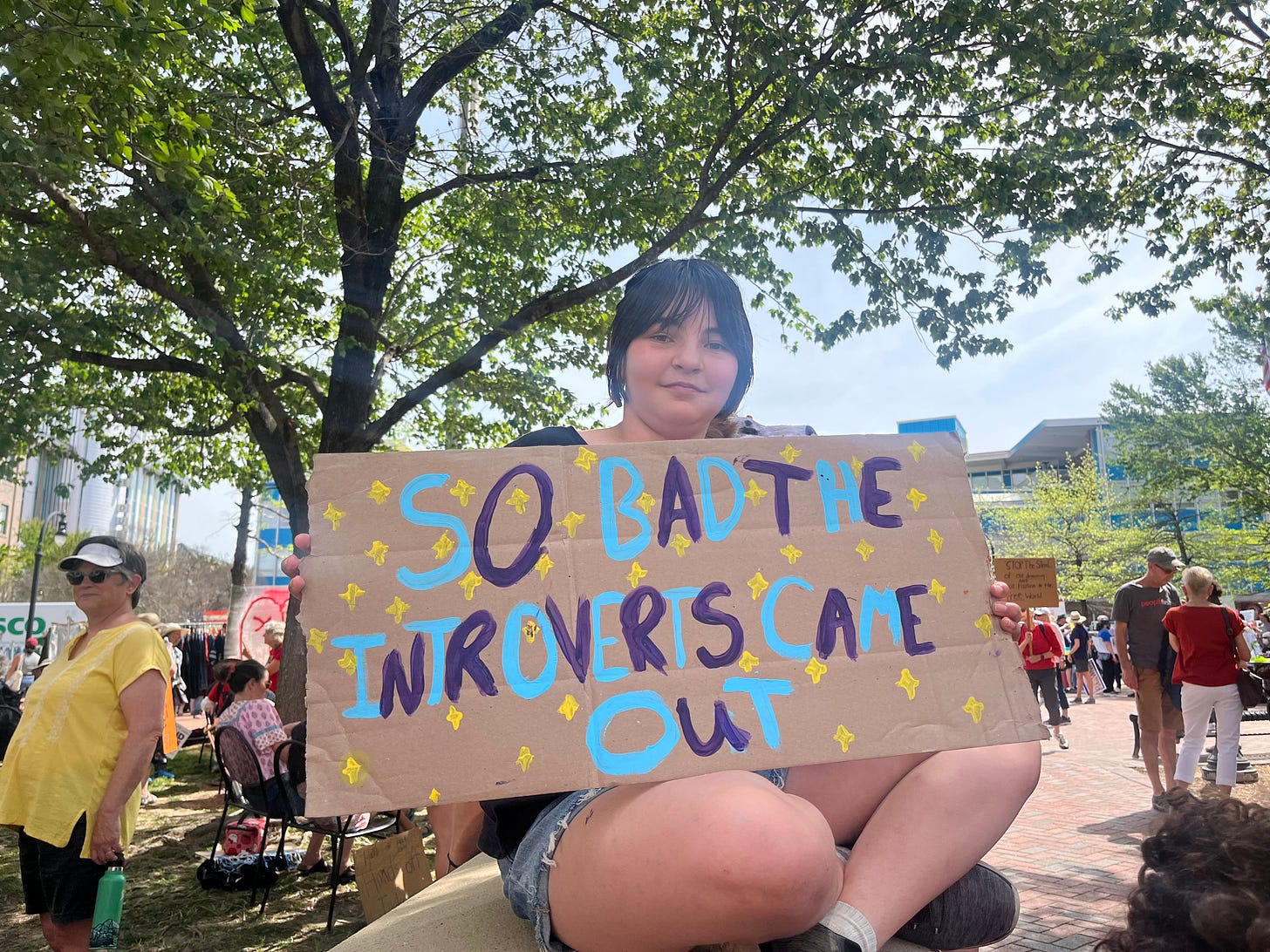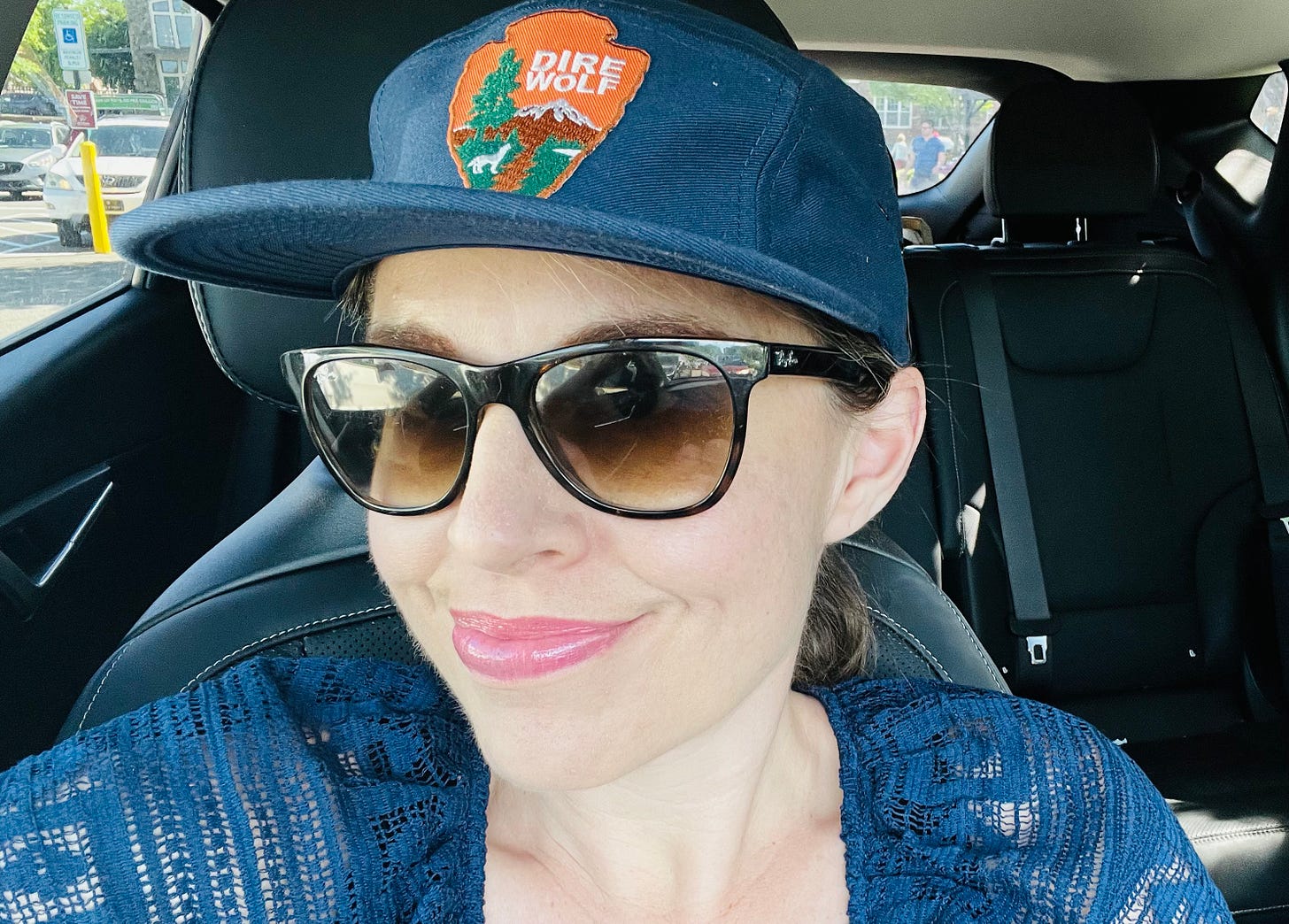Seed Vault for Truth
On Svalbard, Statues, and the Stories We Tell
Do you know about the Svalbard Global Seed Vault?
This image is taken from its official website. Doesn’t it look like something from Andor? The future is now, dude!
Way up in the Norwegian Arctic, a region sometimes called Ultima thule for its remoteness and isolation, carved into a snowy mountainside is a storage facility that “safeguards duplicates of 1,301,397 seed samples from almost every country globally, with room for millions more. Its purpose is to back up genebank collections to secure the foundation of our future food supply.”
I am pretty sure I first learned about it in M.R. O’Connor’s Resurrection Science, a really fascinating and wide-ranging book. Some also call it the Doomsday Vault.
The Seed Vault’s website also says, “Permafrost and thick rock ensure that the seed samples will remain frozen even without power.” I’m not sure how long ago that was written but given warming trends I sure am hopeful about the permafrost being indeed “perma”…
This virtual tour of the seed vault is very cool, if you’re interested in more.
I’m on this track, still—thinking about preservation, conservation, and the variety of approaches that people take to saving life on Earth—following ongoing discussions about de-extinction in the news, as I touched on in my last post.
"Made of Wildness"
You’ve likely seen the news by now about dire wolves being officially de-extincted. I don’t like that word (de-extincted), but ooh, I love the word dire. As in: urgent, serious. Possibly warning of disaster.
I was reminded of the Svalbard Seed Vault while listening to a recent Sarah Silverman podcast; she started describing an idea (it was sort of a comedic bit, also sort of tragically earnest) to ask other countries to hold our own nation’s history for us for a while, as the current administration attempts to erase or re-write it—from school curriculums, from websites, from current crucial initiatives and ongoing institutions and programs…
For a party/perspective that claims to be all about “freedom,” the Trump administration’s ever-growing list of banned words is indeed a chilling act of censorship. From PEN America: these words and terms are being scrubbed from government websites and documents in an attempt by the Trump administration to remove all references not only to diversity, equity and inclusion, but also to climate change, vaccines, and a host of other topics.
The list has now expanded to 350+ words, encompassing even desirable goals like “safe drinking water,” the mention of which can result in research grants or other agreements with the federal government getting nixed.
This is really happening. “Autism” is on the list, y’all. As are the words “disability,” “women,” “elderly” and “Native American” among many others.
Check the list out here. Just a sampling shown in the screenshot below.
Anyway—Sarah’s semi-joke about truth storage made me think about how stories are kept and carried forward, how those who forget history are doomed to repeat it, history is written by the conquerors, etc. And I’m reminded of all the outrage about “erasing history” a few years ago when statues honoring the Confederacy were being removed and Army bases renamed.
Just to clarify what shouldn’t need clarifying: removing statues honoring and valorizing “problematic” (to put it mildly) historical figures, especially statues/memorials that were put in decades after the Civil War ended, under Jim Crow, isn’t erasing history—it’s just what is described: removing those undeserving of tribute from pedestals of honor and esteem. It doesn’t erase the reality/existence of these figures, or even the existence of the statues, themselves—or it shouldn’t, as we need to confront and understand and remember events as they truly happened. They should exist in museums, or archives. Just not in a prominent place clearly meant to valorize (and, say, intimidate)… We can acknowledge complexity and nuance and the lives that were lost to war, and also acknowledge that, just for example, the Confederate soldier didn’t win, and really isn’t “entitled to the admiration of all.” (More on this below).
Am I being over-simplistic here?
The Red Wolf Coalition advocacy organization has a small headquarters on Main Street in Columbia, North Carolina, population 610. Some fifty yards away from the office, right outside the county courthouse, stands a Confederate monument.
Like many such memorials, it was erected several decades after the Civil War had ended. On this one, a statue of a Confederate soldier tops a multi-tiered pedestal, the sides of which are covered in inscriptions, including the names of locals who died fighting in the war, and a portrait of Robert E. Lee. The Confederate soldier won and is entitled to the admiration of all who love honor and liberty… reads one confusing inscription; another says In appreciation of our faithful slaves.
Seeing this, I’m reminded of a line from a J. Drew Lanham essay, “Forever Gone,” that first appeared in Orion magazine: “The belief that some are superior and some are inferior—whether racism, or sending another species into the oblivion of extinction: both grow from the same rotten core.”
When I head out to eastern NC, I’m entering a conflict zone in some ways. As an ecological term, conflict zone can mean a “marginal area between otherwise healthy and distinct biological environments.” On the Albemarle-Pamlico peninsula, sea level rise is contributing to thousands of acres of ghost forests encroaching each year. Camille Dungy describes such ecological zones as volatile, but also “revealing diverse possibilities for what it might mean to be alive.”
ghost forest in eastern NC, snapped by me in May 2022
I do feel, at times, that I’m in hostile territory in this region. Perhaps I should say unfamiliar; bewildering. I’m trying to understand—that’s what I’ve told myself. Other ways of thinking, of living. People who recommend following the “SSS rule” if you encounter a red wolf: that’s “Shoot, Shovel, and Shut Up.”
Falling deep into the internet one night while staying in Stumpy Point, I came across a trove of online documents in a university archive detailing the dubious “leasing” of land reserved for people of the Tuscarora nation to white settlers who soon came to own it, alongside lengthy “bills of sale” recording the trafficking of enslaved people. October 1822: Bill of sale for Watson, Mingo, Davis, Caesar, Susan, Sarah and an infant, Cloe (12 years old), Cloe (11 years old), Hariet (10 years old), Penny (15 years old), all of whom were enslaved people sold by Peter Roscoe to William M. Clark. 24 May 1823: Bill of sale for Silvy, an enslaved person who was sold by James Watson of Bertie County, N.C., to Johnston and Thompson of Bertie County, NC. Bertie County was the site of “Indian Woods,” a tiny reservation for the Tuscarora that exists no longer.
Rahnàwakęw Donnie McDowell of the Tuscarora Nation of North Carolina told me in initial correspondence about the naming of the Pocosin Lakes wolf pack: “Our stewardship of the land and that of our animal relatives like red wolves has not only been directly threatened through centuries of forced removal, colonization, and assimilation, it has also been diminished by an opposing cultural worldview that profits from the removal of certain species.”
In North Carolina, as elsewhere, wolves are often primarily symbols—of unconstitutional federal intrusion, of untamed beauty. In truth, wolves are just wolves: we should expect nothing more of them, and nothing less.
Words and Their Meanings
According to the Endangered Species Act of 1973, “The term "take" means to harass, harm, pursue, hunt, shoot, wound, kill, trap, capture, or collect, or to attempt to engage in any such conduct” with regards to endangered species. From the Center for Biological Diversity: “Take has been defined to include actions that ‘harm’ endangered species through ‘significant habitat modification or degradation.’”
On April 16th the Trump Administration issued a proposal “to rescind the regulatory definition of “harm” in our Endangered Species Act (ESA or the Act) regulations. The existing regulatory definition of “harm,” which includes habitat modification, runs contrary to the best meaning of the statutory term “take.” We are undertaking this change to adhere to the single, best meaning of the ESA.”
CBD again: “Given that habitat destruction is the biggest cause of extinction, this definition of harm has been pivotal to protecting and recovering endangered species. It was upheld in the Supreme Court case Babbitt v. Sweet Home - 515 U.S. 687 (1995). The inclusion of habitat destruction in the prohibition on take has been critical to saving species. It’s a key difference between the federal Endangered Species Act and almost all state endangered species laws… Without a prohibition on habitat destruction, spotted owls, sea turtles, salmon and so many more imperiled animals won’t stand a chance… Trump is trying to drive a knife through the heart of the Endangered Species Act. We refuse to let him wipe out America’s imperiled wildlife, and… the courts won’t allow this radical assault on conservation.”
What can one say/write in response to such things?
It’s definitely worth writing and calling reps and showing up to protests, even when it’s not easy (see sign below spotted at “Hands Off” gathering in Durham recently, which made me smile)…
I’m caught up with a bunch of things as this school year hurtles to an end, so that’s all for now. Hope some of this is at least thought-provoking, and might lead to deeper inquiry and reflection.
If you feel like sharing any of my posts (current or previous) with people who might like to subscribe, thank you and please do!
PS Comparative thanatology is the study of how animals understand death.
PPS My husband brought me this hat from Vegas recently—it’s referring to a Grateful Dead song, not the recent cloning stuff. I’m not sure how/whether to pull off a flat brim.
P.P.P.S. Silliness is necessary, every day. I still check The Onion all the time, this was a fun one:










